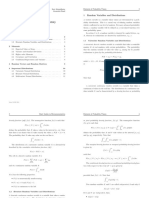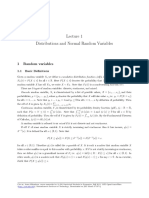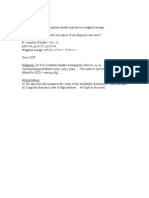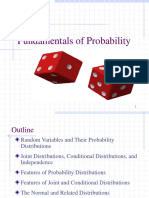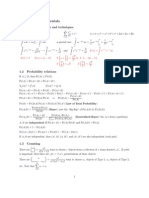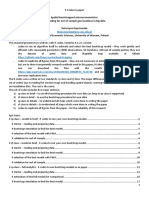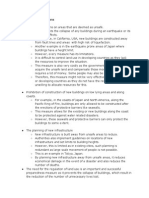0% found this document useful (0 votes)
69 views12 pagesProbability
The document provides an overview of key concepts in probability theory, including:
- Random variables and their distributions, including univariate and bivariate cases.
- Moments such as expected value (mean), variance, standard deviation, and higher-order moments. Properties and rules for calculating moments are discussed.
- Covariance and correlation as measures of the relationship between two random variables. Conditional expectation and variance are also introduced.
- The document concludes by mentioning random vectors, random matrices, and important distributions like the normal distribution.
Uploaded by
ivanmrnCopyright
© © All Rights Reserved
We take content rights seriously. If you suspect this is your content, claim it here.
Available Formats
Download as PDF, TXT or read online on Scribd
0% found this document useful (0 votes)
69 views12 pagesProbability
The document provides an overview of key concepts in probability theory, including:
- Random variables and their distributions, including univariate and bivariate cases.
- Moments such as expected value (mean), variance, standard deviation, and higher-order moments. Properties and rules for calculating moments are discussed.
- Covariance and correlation as measures of the relationship between two random variables. Conditional expectation and variance are also introduced.
- The document concludes by mentioning random vectors, random matrices, and important distributions like the normal distribution.
Uploaded by
ivanmrnCopyright
© © All Rights Reserved
We take content rights seriously. If you suspect this is your content, claim it here.
Available Formats
Download as PDF, TXT or read online on Scribd
/ 12
